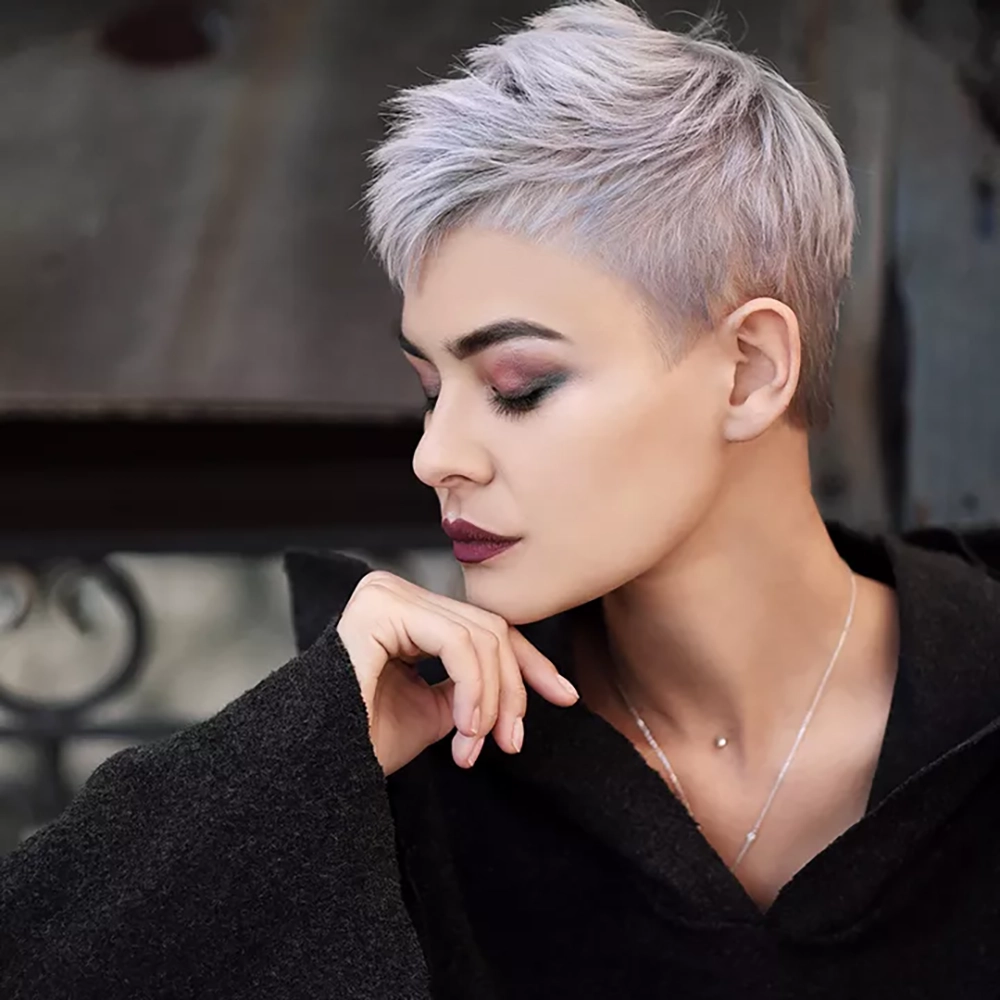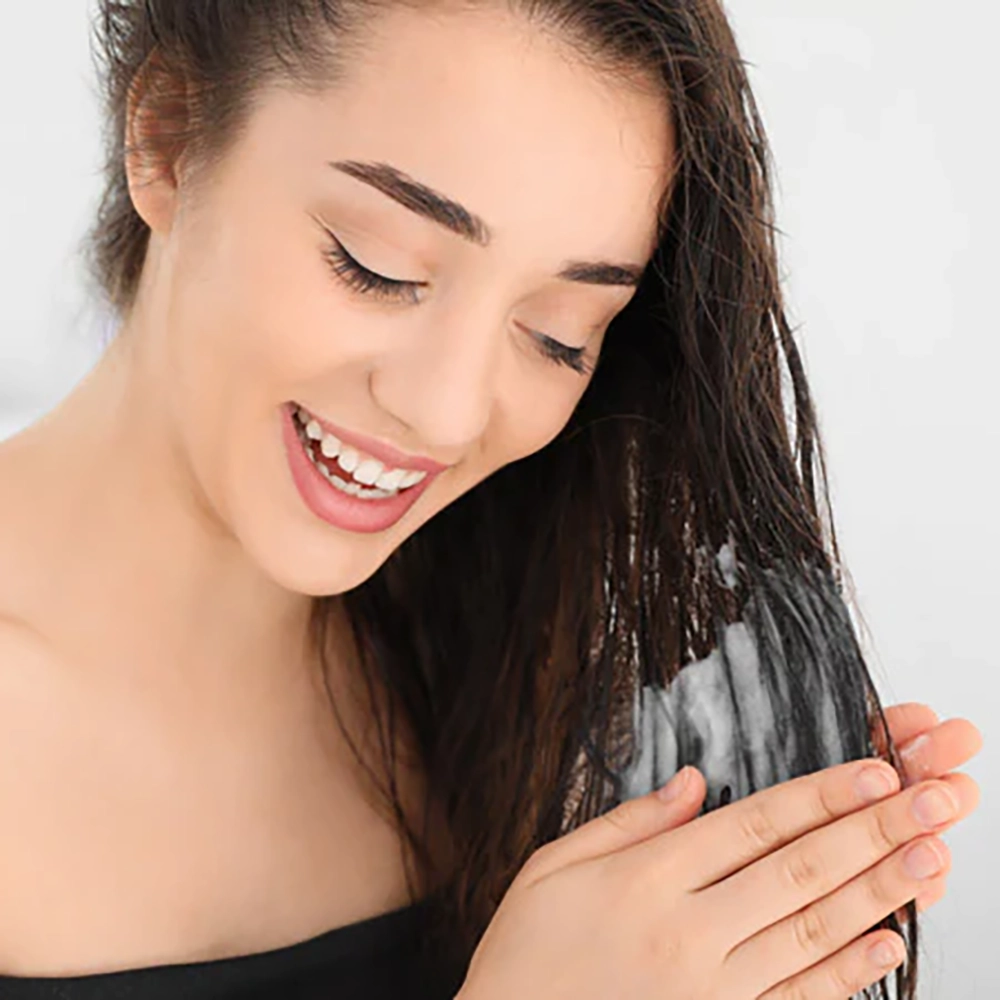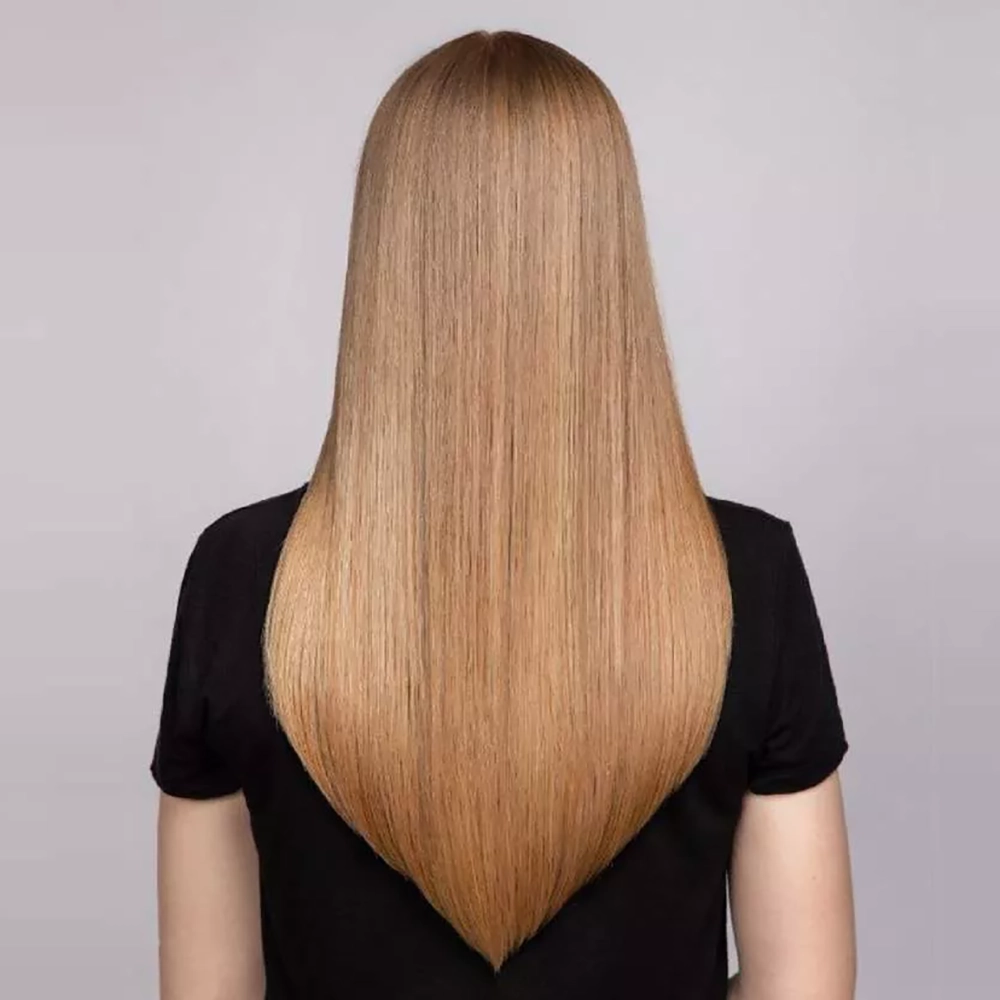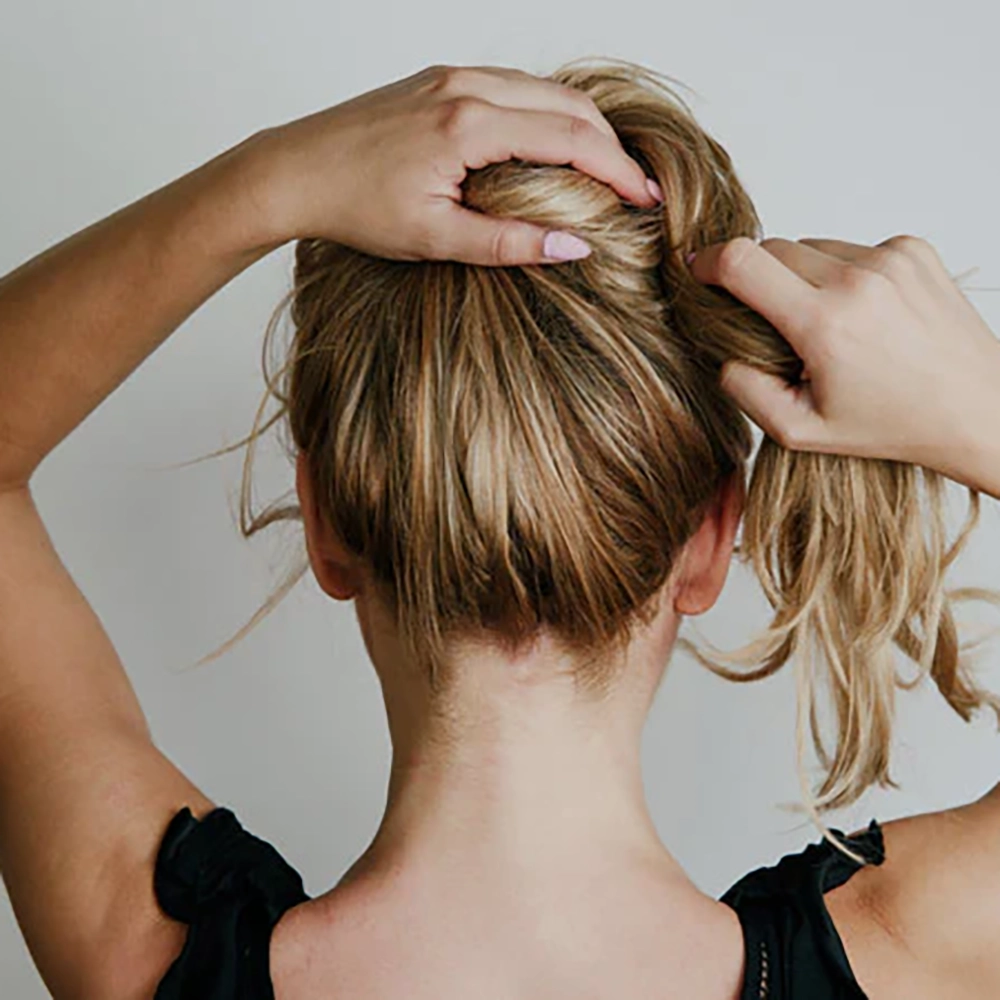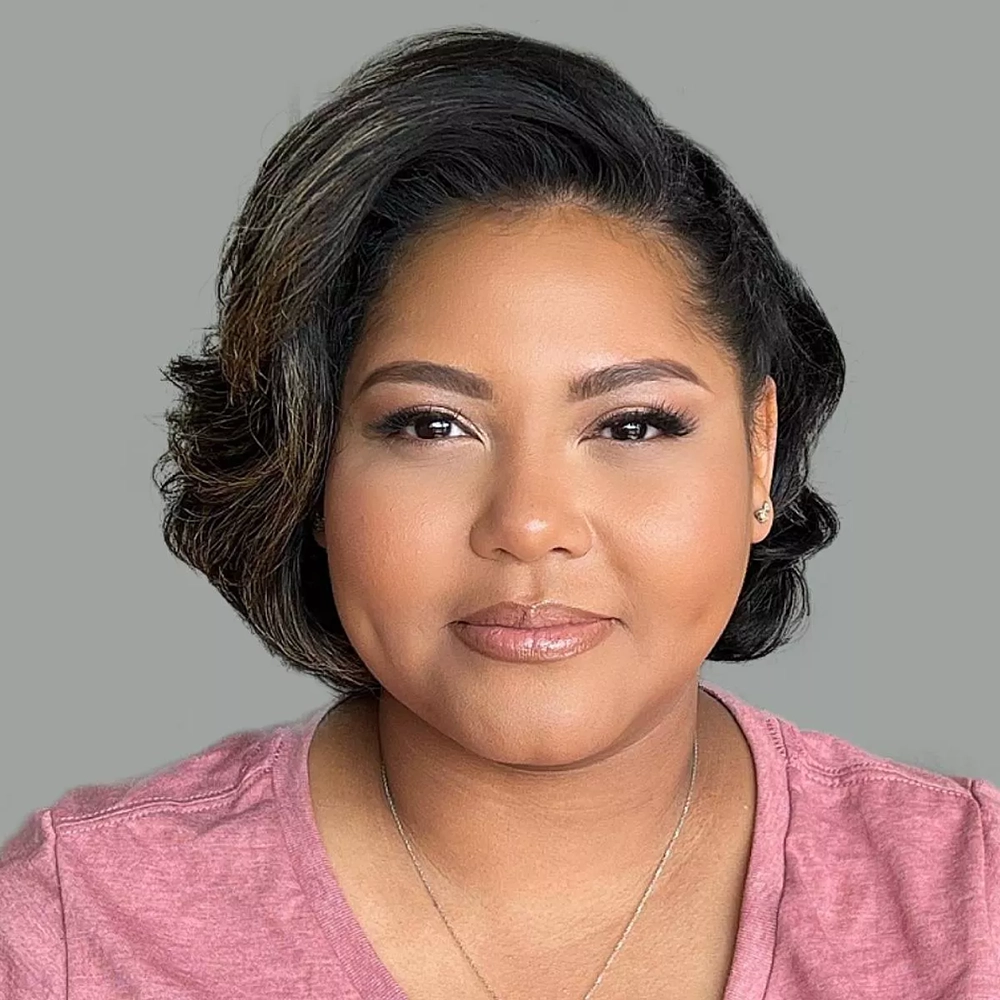Understanding the process of graying
As we age, one inevitable change that occurs is the graying of our hair. This natural phenomenon is a result of a decrease in melanin production in the hair follicles. Melanin is the pigment that gives our hair its color, and as its production slows down, the hair goes through a gradual transition from its original color to gray or white. While some individuals may start seeing gray hairs in their twenties or thirties, most people begin to notice significant graying in their forties or fifties.
There are various factors that contribute to the rate and pattern of graying. Genetics play a significant role, as the timing and extent of graying are often inherited from our parents and grandparents. Additionally, certain medical conditions like vitamin deficiencies, autoimmune disorders, and thyroid problems can hasten the graying process. Lifestyle factors such as stress, smoking, and poor nutrition may also influence the rate at which our hair turns gray.
Choosing the right time to transition
Transitioning from colored hair to gray hair can be a big decision, and timing is crucial. There are several factors to consider when choosing the right time to begin your transition. Firstly, you need to evaluate the current state of your hair. If it’s heavily dyed or damaged, it may take longer to transition to gray. Secondly, think about your lifestyle and commitments. Transitioning may require regular salon visits and extra hair care, so it’s important to choose a time when you can dedicate enough time and effort to the process. Lastly, consider your emotional readiness. Transitioning to gray hair can be a significant change, so it’s essential to be mentally prepared for the transformation.
Once you’ve assessed these factors, you’ll be better equipped to choose the ideal time to start your transition. Remember, everyone’s journey is unique, and there’s no right or wrong time to embrace your natural gray.
- Assess the current state of your hair
- Evaluate your lifestyle and commitments
- Consider your emotional readiness for the change
| Factors to Consider | Importance |
|---|---|
| Current hair condition | High |
| Lifestyle and commitments | Medium |
| Emotional readiness | High |
Exploring different methods of transitioning
Transitioning to gray hair can be an exciting journey filled with self-discovery and confidence. It’s a natural process that many individuals go through as they age, and embracing it can be empowering. However, deciding to transition is just the first step. There are different methods available to achieve the gray hair look, each with its own pros and cons. In this blog post, we will explore some of the different methods of transitioning to gray hair.
Natural Transition: One method of transitioning to gray hair is to simply let nature take its course. This means allowing your natural gray hair to grow out and gradually replacing the colored hair. It can be a slow process as you wait for your hair to grow, but it is the most low-maintenance and least damaging approach. Embracing your natural gray hair can also give you a unique and authentic look.
Hair Color Transition: If you’re not ready to fully commit to your natural gray hair, you can choose to transition gradually using hair color. This method involves blending your roots with your colored hair to create a seamless and gradual transition. This can be achieved by using semi-permanent or demi-permanent hair dyes in shades similar to your natural gray color. It allows you to experiment with different tones and shades, giving you more control over the transition process.
Highlighing/Lowlighting: Another method to explore during the transitioning process is highlighting or lowlighting your hair. This technique involves adding lighter or darker strands of hair to create a multidimensional look. Highlights or lowlights can be strategically placed throughout your hair to blend with your natural gray hair, creating a more gradual and subtle transition. This method can be particularly effective if you have a significant amount of gray hair already.
- Benefits of Exploring Different Methods:
- Allows you to find the method that works best for your individual preferences and lifestyle.
- Gives you the opportunity to experiment with different styles and looks during the transition.
- Helps you embrace your unique beauty and build confidence in your gray hair journey.
- Provides a chance to learn more about hair care and color techniques.
| Method | Pros | Cons |
|---|---|---|
| Natural Transition | – Least damaging to hair – Authentic gray hair look – Low maintenance |
– Can take a long time to fully transition – Initial two-tone look during transition |
| Hair Color Transition | – Gradual transition – More control over color – Can experiment with different shades |
– Requires regular touch-ups – Potential damage to hair with frequent coloring |
| Highlighting/Lowlighting | – Creates a multidimensional look – Can be blended with natural gray hair – Enhances texture and depth |
– Requires maintenance and touch-ups – Can be costly – May not fully camouflage all gray hair |
Exploring different methods of transitioning to gray hair can be an exciting and transformative experience. Whether you choose a natural approach, use hair color to gradually transition, or opt for highlighting/lowlighting techniques, it’s important to embrace the process and find what works best for you. Remember, transitioning to gray hair is a personal choice, and the goal is to feel confident and beautiful in your own skin.
Maintaining healthy gray hair
When it comes to maintaining healthy gray hair, there are a few key steps you can take to keep your locks looking vibrant and beautiful. Gray hair is typically coarser and drier than pigmented hair, so extra care is needed to ensure it stays healthy and lustrous. By following a regular hair care routine and incorporating specific products into your regimen, you can keep your gray hair in top condition.
Firstly, it is essential to use a gentle shampoo and conditioner specifically formulated for gray hair. Look for products that are moisturizing and sulfate-free, as sulfates can strip the hair of its natural oils and further contribute to dryness. Adding a weekly deep conditioning treatment to your routine can also help nourish and hydrate your gray locks.
Secondly, protecting your hair from heat damage is crucial. Excessive use of heat styling tools such as hairdryers, straighteners, and curling irons can lead to dry and brittle hair. Whenever possible, let your hair air dry and embrace your natural texture. If you do use heat styling tools, make sure to apply a heat protectant spray beforehand to minimize damage.
In addition to a proper hair care routine, a healthy diet plays a significant role in maintaining healthy gray hair. Foods rich in omega-3 fatty acids, such as salmon and flaxseeds, help keep the hair hydrated and promote shine. Vitamin- and mineral-rich foods like spinach, eggs, and nuts are also beneficial for hair health. Make sure to stay hydrated by drinking plenty of water throughout the day to keep your hair moisturized from the inside out.
- Use a gentle shampoo and conditioner formulated for gray hair
- Incorporate a weekly deep conditioning treatment
- Avoid excessive heat styling and use a heat protectant spray
- Eat a balanced diet rich in omega-3 fatty acids and vitamins
- Stay hydrated by drinking plenty of water
By following these tips and incorporating them into your hair care routine, you can maintain healthy and radiant gray hair. Embrace your natural beauty and let your gray locks shine!
Dealing with the emotional aspects of transitioning
Transitioning to gray hair can be an emotional journey for many individuals. It is not just a physical transformation, but also a symbolic one that represents embracing one’s natural beauty and embracing the process of aging. Dealing with the emotional aspects of transitioning requires patience, self-acceptance, and support from loved ones.
One of the key emotional challenges during the transition is letting go of societal beauty standards and expectations. For years, we have been conditioned to believe that youth and vitality are synonymous with beauty. The decision to transition to gray hair challenges these deeply ingrained beliefs and requires a shift in mindset. It is important to remember that beauty comes in all forms and embracing your gray hair is a celebration of your unique journey.
Another emotional aspect of transitioning to gray hair is the fear of judgment or criticism from others. It can be daunting to stand out from the crowd and defy societal norms. However, it is essential to remember that true confidence comes from within. Surround yourself with supportive and like-minded individuals who appreciate your decision to transition and uplift your spirit.
- Practice self-compassion and acceptance during this emotional journey.
- Seek emotional support from friends, family, or support groups who have gone through the transition.
- Engage in self-care activities such as meditation, journaling, or practicing mindfulness to alleviate stress and anxiety.
- Focus on the positive aspects of transitioning, such as the freedom from regular hair dyeing and the authenticity it brings to your overall appearance.
Additionally, it is crucial to acknowledge the grieving process that may accompany the transition. Saying goodbye to your previous hair color can evoke a sense of loss and nostalgia. Allow yourself to mourn the old version of yourself while embracing the new chapter that gray hair represents.
| Dealing with the Emotional Aspects of Transitioning: Tips |
|---|
| 1. Connect with others: Seek support from individuals who have already transitioned or are going through the same process. |
| 2. Embrace self-care: Engage in activities that promote mental and emotional well-being, such as meditation, exercise, or practicing gratitude. |
| 3. Express yourself: Consider documenting your transition through photography, writing, or any creative outlet that allows you to express your emotions. |
Remember, transitioning to gray hair is a personal choice that reflects your journey towards self-acceptance. Embrace the emotional aspects of this transition with love, kindness, and optimism. Celebrate the authentic and beautiful individual that you are!
Styling tips for gray hair
Gray hair is a natural part of the aging process, and many individuals choose to embrace their gray strands rather than covering them up. If you have made the decision to transition to gray hair or if you already have a beautiful head full of gray, you may be wondering about the best ways to style and maintain your new look. In this blog post, we will explore some styling tips specifically tailored to those with gray hair.
1. Moisturize: Gray hair tends to be drier and more coarse than pigmented hair, so it is crucial to keep it moisturized. Use a hydrating shampoo and conditioner that are specifically formulated for gray hair. Additionally, incorporating a leave-in conditioner or hair oil into your hair care routine can help keep your locks soft and manageable.
2. Embrace your natural texture: Gray hair often has a unique texture and pattern. Instead of fighting against it, embrace your natural texture and work with it. Allow your waves, curls, or straight strands to shine through by using products that enhance your hair’s natural texture. This will add dimension and make your gray hair appear more vibrant.
3. Experiment with different hairstyles: Gray hair can be incredibly versatile when it comes to styling. Play around with different hairstyles to find the ones that flatter your face shape and suit your personal style. Consider trying out a chic pixie cut, a sleek bob, or even a trendy updo. Don’t be afraid to get creative and have fun with your gray hair!
4. Use color-enhancing products: To prevent your gray hair from appearing dull or yellowish, incorporate color-enhancing products into your hair care routine. Purple or blue-tinted shampoos and conditioners can help neutralize any unwanted brassy tones, leaving your gray hair looking fresh and vibrant.
5. Protect your hair from heat: Heat styling tools can be damaging to any hair type, but they can be particularly harsh on gray hair. Excessive heat can cause your gray strands to become brittle and prone to breakage. If you must use heat styling tools, make sure to apply a heat protectant spray beforehand and use the lowest heat setting possible.
| Styling Tips for Gray Hair: |
|---|
| Moisturize your hair regularly |
| Embrace your natural texture |
| Experiment with different hairstyles |
| Use color-enhancing products to prevent dullness |
| Protect your hair from excessive heat |
By following these styling tips, you can embrace the beauty of your gray hair and showcase it in all its glory. Remember, gray hair is a unique and beautiful part of who you are, so celebrate it and have fun exploring different styles and looks!
Addressing common challenges during the transition
Transitioning to gray hair can be a significant change in a person’s life. While it can be an empowering and liberating experience, it also comes with its fair share of challenges. Understanding and addressing these challenges is essential to ensure a smooth and successful transition. In this blog post, we will explore some common challenges that individuals may face during their transition to gray hair and provide valuable insights on how to overcome them.
1. Dealing with self-doubt: One of the most common challenges during the transition period is doubting one’s decision to embrace gray hair. It is natural to have moments of uncertainty or insecurity, especially when encountering societal norms and expectations. However, it is important to remember that transitioning to gray hair is a personal choice, and embracing your natural beauty should be celebrated. Surround yourself with a supportive community, engage with online forums or support groups, and remind yourself of the reasons why you decided to embark on this journey.
2. Managing two-toned hair: Another challenge that individuals may face during the transition period is managing the two-toned hair. As your natural gray hair grows in, it creates a stark contrast with your previously dyed hair. This can make it challenging to achieve a cohesive and seamless look. To address this, consider visiting a professional hairstylist who specializes in gray hair transitions. They can provide expert advice on blending techniques and recommend suitable hair care products to minimize the contrast and create a more harmonious appearance.
3. Patience during the growing-out phase: Transitioning to gray hair is a process that requires patience. During the growing-out phase, you may experience moments of frustration, especially when your hair is in an awkward state between dyed and natural hair. It is essential to stay committed to your decision and have realistic expectations. Embrace this phase as part of the journey and experiment with different hairstyles or accessories to add flair and confidence to your overall look.
Transitioning to gray hair is a personal and unique experience for each individual. While these challenges may arise, it is crucial to remember that they are temporary obstacles that can be overcome with patience, self-care, and a positive mindset. Trust in your decision to embrace your natural beauty and surround yourself with a supportive community to navigate any challenges that may arise. Ultimately, addressing these common challenges during the transition will lead you to a place of self-acceptance and confidence, allowing you to fully embrace your beautiful gray locks.


